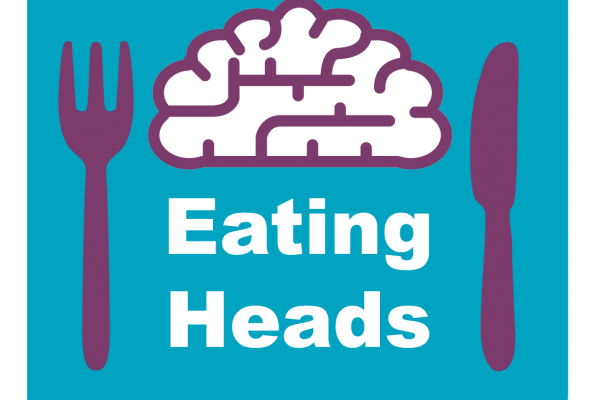
Improvements in technology, standard of living and changing social structures have nearly always triggered negative reactions from a subset of the population. Luddites, as reactionaries of this type were nicknamed during the British Industrial Revolution, argue that a simple, “natural” lifestyle is preferable to modernization. Their arguments usually advance traditional or extremely conservative philosophies advocating the return to a more restrictive lifestyle in order to cope with, or to escape, the consequences of modernity. In their eyes, modernity introduces new methods that undermine accepted traditions, thereby endangering society as a whole. Extremely traditionalist societies are wary of whatever positive consequences modernity might bring, because they believe in the intrinsic value of tradition. As a consequence, they often avoid, deny and restrict innovation. In a scenario in which tradition clashes with innovation, tradition will thus take precedence.
Fortunately, many cultures, previously under the yoke of extremely traditional philosophies, were aided by the age of enlightenment to open their doors to intellectual pluralism, technological ingenuity, and ever-increasing wealth. For most of the West, innovation, reason and personal well-being have changed from being obscenities to worthy goals. And as people acculumulated material wealth and acquired more leisure time, there developed a spectrum of quality in most areas of life. Humanity developed an affinity for beautiful clothes, comfortable furniture, concerts, movies and books. We created games and various hobbies. But it seems that above all we learned to enjoy food.
Ohhhh… Food… How We Love to Stimulate Our Senses
Indian spices, tropical fruits, Argentinian meat, Northern Sea fish, Kazakhstani grain, French cheese and wine, Brazilian coffee and sugar, African cocoa, and so on. Gourmet meals consisting of three to seven courses — that were once reserved for nobility — have become much more attainable to Western inhabitants. Foods from far-away places can now be found in local grocery stores. The days in which commoners nourished themselves on mouldy potatoes and onions for a whole winter will probably never return, enriching the common vocabulary accordingly. Breakfast, brunch, lunch, afternoon tea, dinner and late night snacks; appetizers, first course, side course, main course and dessert; aperitif, beer, red wine, cocktails, whisky and digestif; mineral water, smart water, fruit juices, organic shakes, soft drinks, coffee and tea; etc etc. After suffering for many years from limited nutritional variety, western society developed an appetite without bounds, giving birth to a widespread global culture.
To modern man, the act of eating means much more than just nourishment, occupying a significant part in our lives. From a physiological persective, food enables us to satisfy our physical and cognitive needs. From a psychological perspective, food stimulates emotions and desires, and acts as a support mechanism at times of stress. And, from a sociological perspective, food serves as a bridge between different people and cultures. However, while food serves many positive purposes, it also has downsides: some foods and eating habits can cause psychological and physiological dependencies. Consequently, in our rich and diverse world of food, it is important to devote some attention to understanding the possible consequences of our nutritional choices.
Is Ronald McDonald Really Our Friend?

The days in which people grew most of their own food are gone. Western society developed an immense industry to satisfy the nutritional needs of billions of people on a daily basis. Advancements in food production made a huge variety of foods readily accessible to most westerners, and this created a dependency on external producers. The problem is that industrial food is not necessarily good for us, since the food industry’s interests are often at odds with our own interests. Manufacturers use processed materials such as artificial preservatives and flavoring to extend shelf life and increase taste, but how do these substances compare with natural foods? Using these materials is profitable for the manufacturer, but what is the impact on the consumer? The more industrial our food becomes, the more we must be aware of the ingredients that lie on our plates.
Often, when one extreme is substituted for another, problems aren’t solved, they simply change form. From a state of malnutrition and poor physical well-being, the new world introduced a tremendous increase in food supply and consumption, and with it an increase in physical and psychological chronic diseases such as diabetes, anorexia, bulimia, and cancer. And studies now show that overweight and obesity are related to one out of five death cases in the United States.[1]
Sit and Eat, Boy!
Could it be that the scaremongers of modernity had it right, that modernity is the cause of all of these troubling statistics? I will argue otherwise, because traditionalist societies also engender nutritional problems: they are slow to adopt life-saving discoveries, and their entrenched customs often cause people to over-eat.
For example, many cultures consider it rude to decline food and drink offered by a host. This custom leads people to disregard their natural feelings of hunger and fullness and to eat upon command. We can observe this phenomenon in child-rearing. Who among us hasn’t encountered a child who would play for hours, at the cost of skipping a meal. And who hasn’t heard (at least once) a parent forcing his child to sit and eat even if he wasn’t hungry. When done on a regular basis, these habits may change our ability to distinguish and follow our natural sensations of hunger and fullness. In most cases, curious and healthy children think about food when they are extremely hungry (or when they get used to eating sweets). When parents force them to eat, children learn to give precedence to eating over other actions — a habit that may haunt them as adults suffering from overweight, difficulty concentrating, and low self-esteem.
As the above example demonstrates, overabundance and variety of food options are not the only source of nutritional problems. Eating-customs can lead people to lose touch with their inner sensations, causing them to eat when they are not hungry. Traditionalists, who urge us to adhere to ancient customs, are therefore wrong in asserting that modernity is the source of all problems. Nutritional problems do not necessarily stem from overabundance, but rather from a lack of moderation in eating and from the inability to distinguish and act upon one’s natural needs.
Have a Bite. Have a Magnum

By now, most western countries are aware of the dangers attributed to excess eating, but what about other factors influencing our nutritional habits? Trends in nutrition are often based on various definitions of health, happiness, morality and success, and an in-depth understanding of these concepts could help us reach better decisions.
For instance, westerners are learning that career success is not the only ingredient for happiness and personal fulfillment. To achieve happiness and well-being, we need to balance a complex set of factors, varying from professional and social success to personal acceptance. It is important to understand that the ever-growing marketing revolution — that enabled leading brands to expand globally and influence our aesthetic ideals — could not have done so without appealing to consumers’ emotions and desires: to be better, stronger, prettier, healthier, slimmer, happier and richer. Of course, these are not the only motivating desires, but it is not an exaggeration to say that they have played a key role in the swift advancement of Western civilization.
The growing interest in nutrition stems not only from individuals’ interest in improving their well-being, but also from the nature of free markets. Regrettably or not (depending on one’s point of view), external appearance is given much value in our competitive world. Most people would agree that keeping a well-groomed and healthy appearance influences our social and professional mobility. In other words, we want to look better not only to enjoy the inner well-being that accompanies good nutrition, but also to influence the reactions of people around us: employers, customers, family members, friends, romantic partners, etc. Our external appearance contributes to a first impression, testifies to our character and abilities, and affects our relationships. Regardless of whether this emphasis on external appearance is a sign of capitalist society’s superficiality, or a sign of its commitment to excellence, it remains the case that most people are willing to work hard to achieve their aesthetic ideals. ‘Are all aesthetic ideals equally justifiable?’ is an extremely important question we’ll have to discuss in-depthly in a future article, but for now, it is enough to understand that our aesthetic ideals, actions and choices are influenced by complex internal and external factors.
In this post, I hope I managed to raise your attention to a few complexities surrounding the question of good nutrition. Any approach to nutrition might be affected by points I have raised, as well as others I have not mentioned. The field of nutrition is vast and interdisciplinary, and as we gather more knowledge, we will find new angles from which to evaluate our opinions, options and choices. For the time being, I recommend we all take a moment to inspect our implicit and explicit assumptions regarding nutrition and ask ourselves where they come from.
References: [1] Masters, Ryan K. et al. “The Impact of Obesity on US Mortality Levels: The Importance of Age and Cohort Factors in Population Estimates” in American Journal of Public Health, Volume 103, Issue 10 (October 2013). http://ajph.aphapublications.org/doi/abs/10.2105/AJPH.2013.301379




